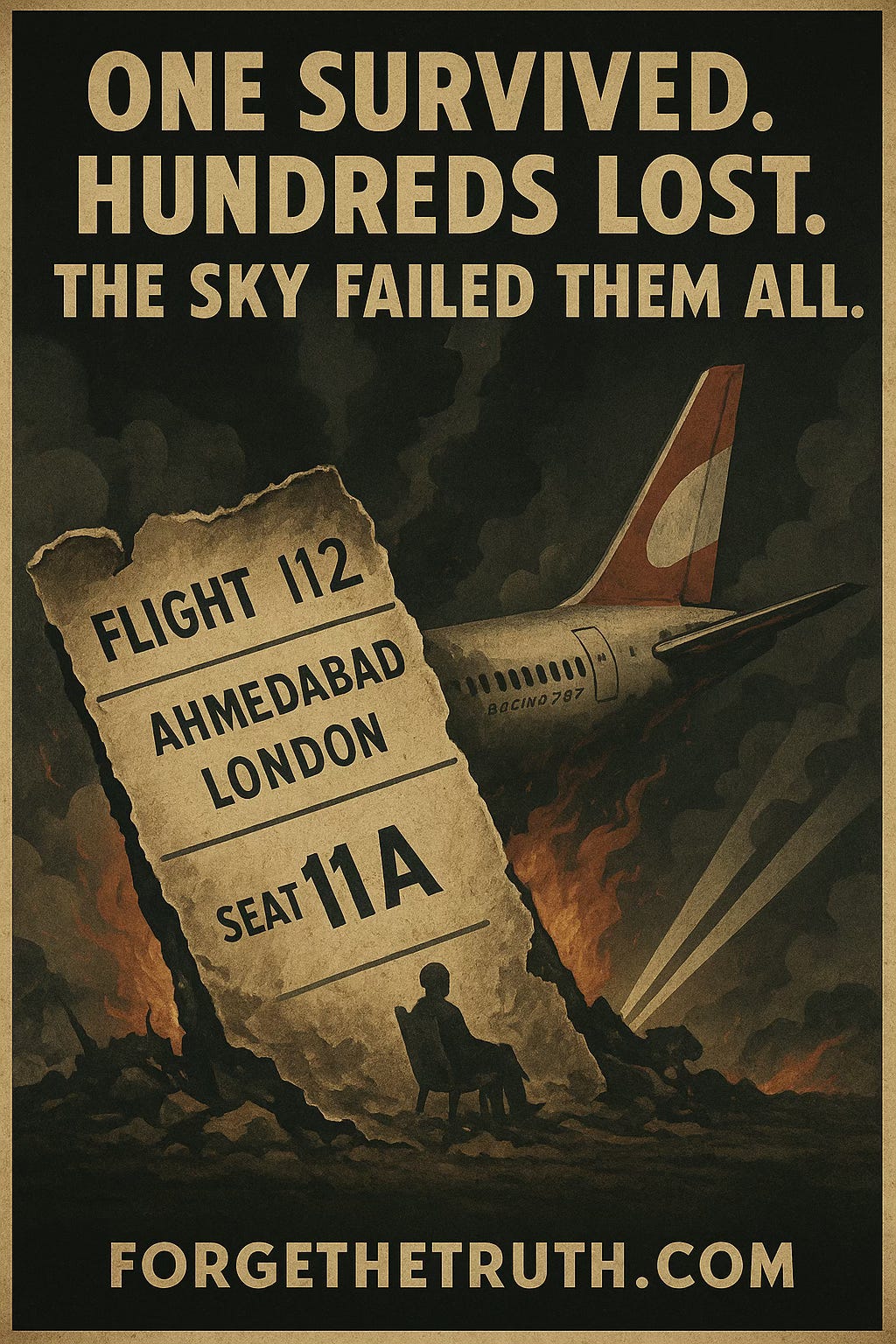Air India Boeing 787 Crash in Ahmedabad
One man survived. Hundreds didn’t. What do we owe the fallen when trust in flight is shattered?
AHMEDABAD, INDIA — June 12, 2025.
In the early morning haze above Ahmedabad, India, Flight 112 lifted off as thousands of others do each day; quietly, confidently, carrying dreams and ordinary lives to new destinations. Moments later, fire consumed the sky.
A Boeing 787, bound for London, plunged to the earth with more than 240 souls aboard. The cause is still under investigation, but the outcome is heartbreakingly clear. Only one man survived. Vishwashkumar Ramesh, seated in 11A, emerged as a symbol of eerie fate. Everyone else perished.
It is India’s deadliest air tragedy in over a decade—and a global gut punch to aviation safety, corporate accountability, and the illusion that modern engineering always protects us.
The cockpit voice recorders are silent now, buried in ash and debris. But the questions remain deafening:
Was it human error?
Mechanical failure?
Regulatory neglect?
And perhaps more urgently: will we listen this time?
Aviation disasters don’t just break bodies. They break trust. In the systems. In the silence. In the stories that go untold unless we bear witness.
We built this poster not to sensationalize, but to sear a truth into memory: we entrust our lives to systems that must be constantly watched, questioned, and improved.
No one boards a flight thinking they’ll never land. But today, hundreds of families are left in mourning because something or someone failed them.
May this tragedy not be buried with the wreckage.
Art becomes action. ForgeTheTruth.com
Question for readers:
When safety systems fail, who gets to walk away and who gets to speak for those who can’t?

